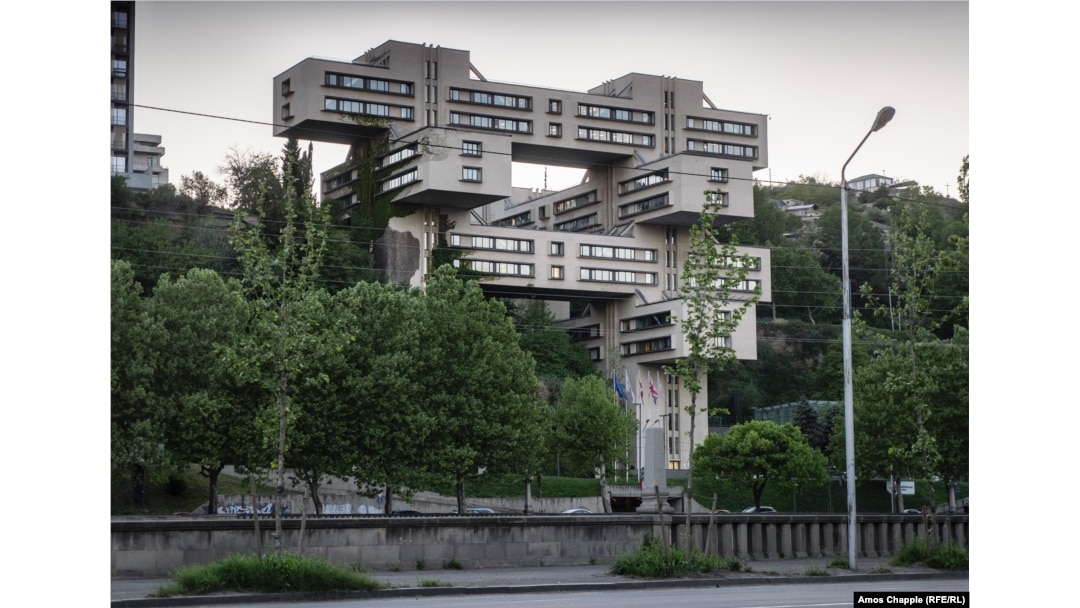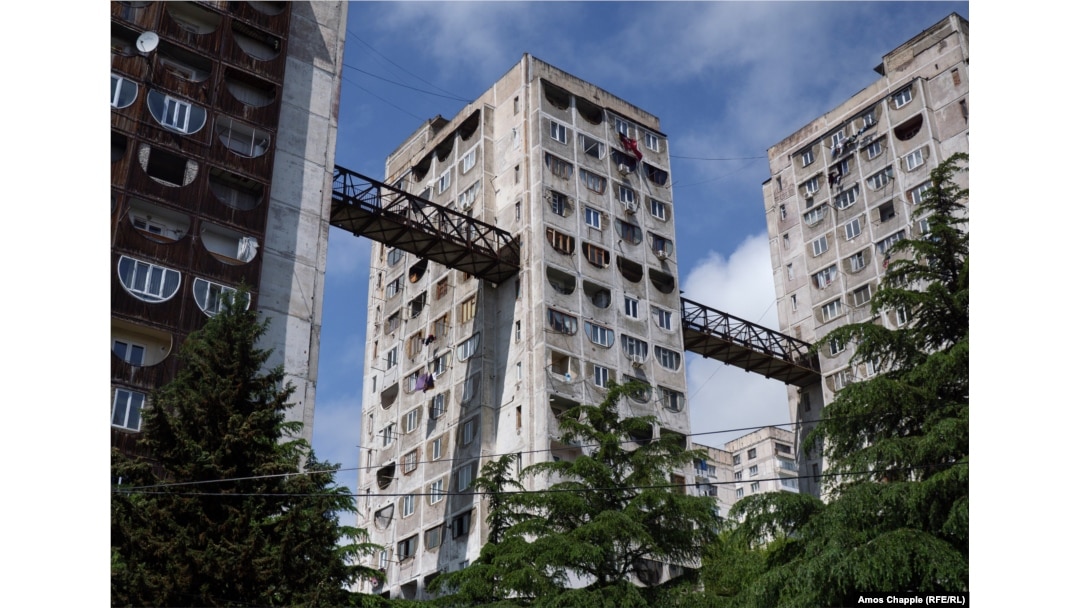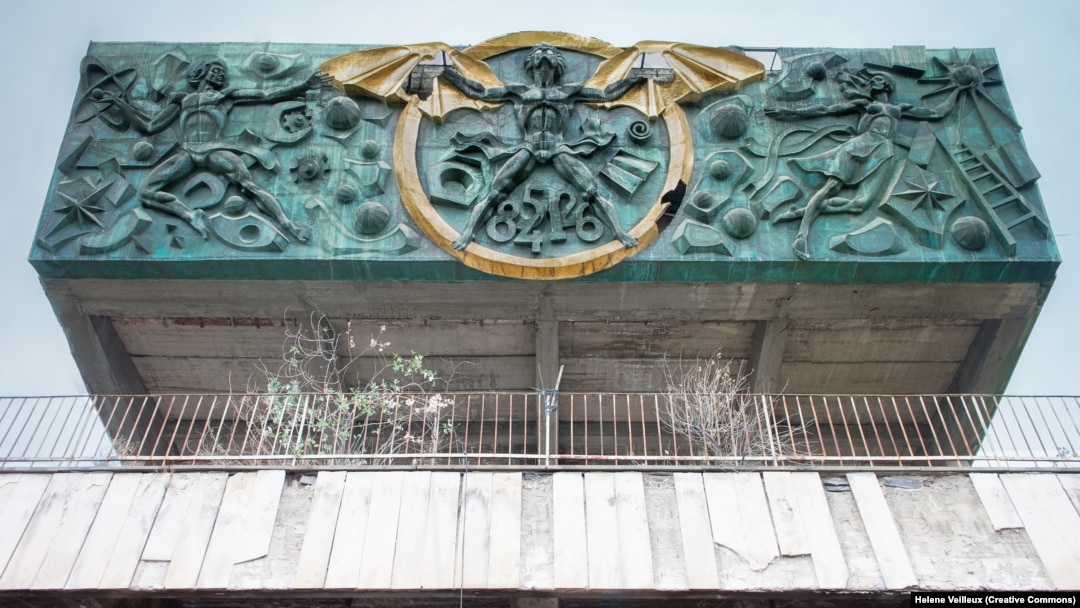Interest in Georgia’s Soviet-era architecture is surging, even as some of the most spectacular landmarks in the capital, Tbilisi, are literally disappearing overnight.

Tbilisi’s Palace of Rituals, a swirling stone structure completed in the 1980s and now owned by a Georgian oligarch

The former Highways Ministry overlooks the Mtkvari River. The Jenga-like structure houses the headquarters of the Bank of Georgia.
These are some of the dozens of unique, Soviet-era structures in the Georgian capital, Tbilisi, that are seeing a spike in interest from foreign tourists.

Apartment blocks in a hilly Tbilisi suburb with a dizzying “skybridge” that allows people to take an elevator up to the apartment on the left and then walk across to a hilltop grocery store
Buildings such as these are widely seen as aesthetically worthless by local Georgians and a reminder of the country’s ruinous communist past.
But Australian Maurice Wolf, who runs a tour company showcasing Tbilisi’s brutalist architecture, says there has been a sharp uptick in interest since 2019 from mostly Western Europeans in Tbilisi's "concrete monsters."
A man walks through the pillars of the Chronicle of Georgia monument.
Before Georgia closed its borders in early 2020 due to the coronavirus pandemic, Wolf and his French partner, Helene Veilleux, were charging 35 euros per head for daily walking tours of Tbilisi’s brutalist architecture. One page of their website dedicated to Tbilisi’s Soviet-era architecture has clocked up nearly 250,000 page views. The pair are currently running the tours each Sunday as tourism slowly returns to Georgia.
The hilltop Chronicle of Georgia monument was built in 1985.
That interest has led to copycat local companies offering similar "brutalism tours," priced at about $170 for the day.
Tbilisi’s former Archaeology Museum
Brutalism is a hulking style of architecture that emphasizes the bare materials -- quite often the thick concrete that a structure is made from.
A former Communist Party parking garage
But despite the potential for the buildings to become a drawing card for the city, the lack of interest from locals and the authorities leaves much of the politically tainted architecture vulnerable to decay and the whims of private owners. Buildings such as this parking garage are not protected by Georgia’s heritage laws.
A 2016 photo of what was known as “Soviet Batman,” a 1976 relief on Tbilisi’s Technical College building
Beginning in 2018, this striking relief that overlooked one of Tbilisi’s main highways began to be picked apart, probably for scrap metal. Small chunks of the artwork were stolen overnight for several months.
A picture sequence shows the gradual destruction of the monument between 2018 and 2019.
Today, nothing remains of the relief.
Wolf says the Soviet aesthetic of the “Soviet Batman” meant few locals cared about its destruction. “People were and are too poor in general to care about something that they consider an ugly reminder of the past,” he says.
A Soviet-era relief on a residential Tbilisi street
The tour operator believes there is a general lack of awareness of the potential value of Soviet-era art, which many struggle to view independently of its links to a hated political system.
A man walks into a Soviet-era apartment in a northern suburb of Tbilisi.
One aspect of the brutalist architectural style, however, means that even without legal protection, many of the structures will be around for a while.
Workers take a cigarette break in the former building of the Highways Ministry.
The dense, concrete-heavy construction of brutalist buildings means demolition in many cases would be too costly and difficult to make sense for property developers.


